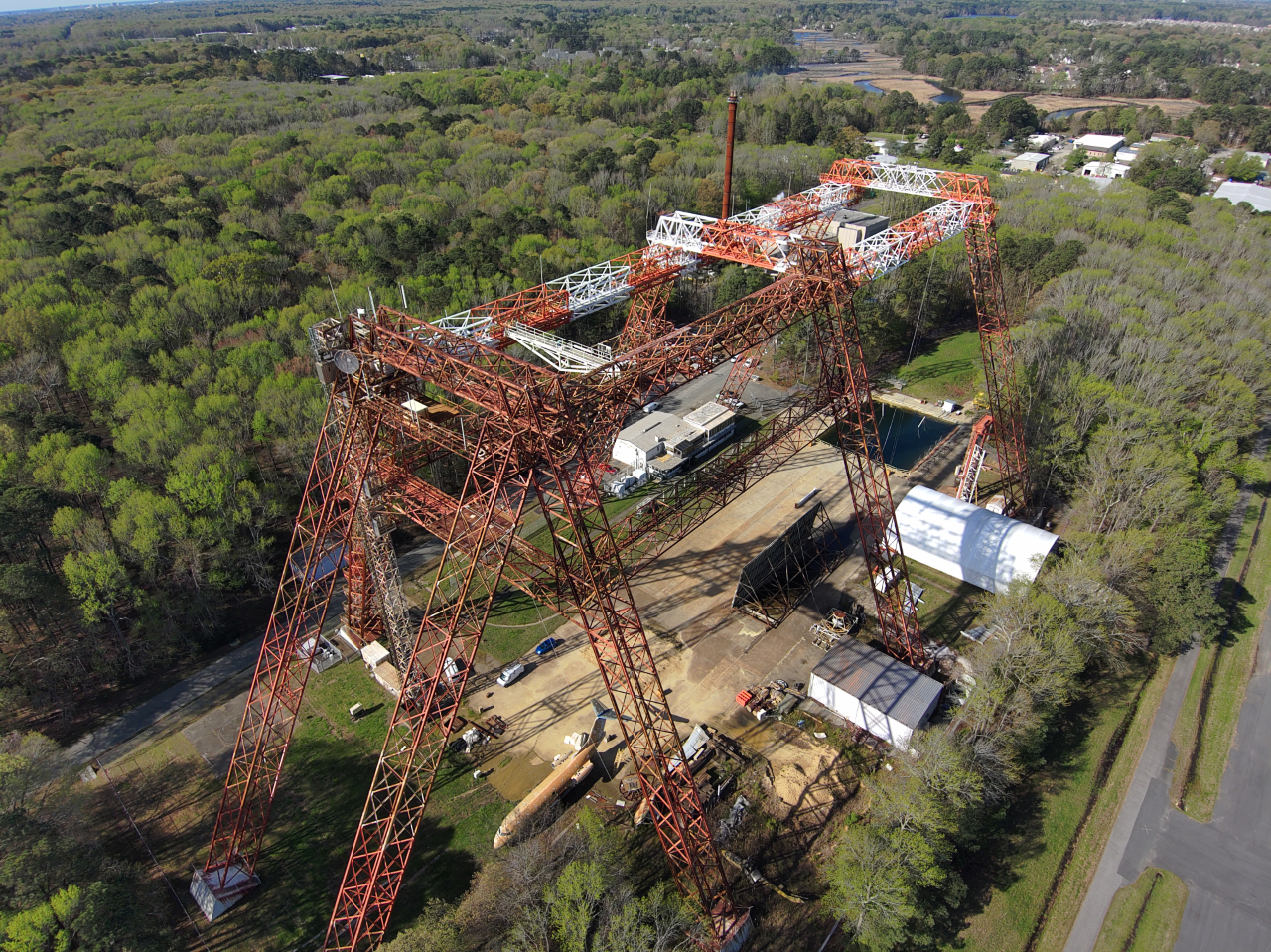EF Global VTOL
16 Jun 2023

This is sidebar of the main article - Melding Old and New Technology: Impact Testing for Crash Safety
The LandIR became operational in 1965 as the Lunar Landing Research Facility (LLRF). Construction had begun in 1963 to model lunar gravity to allow Neil Armstrong, Edwin “Buzz” Aldrin and other astronauts selected for Apollo missions to train for the final 150 ft (45 m) before landing on the moon.
The mammoth A-frame steel structure could be described as the biggest erector set ever constructed. To mimic the moon’s gravity, one-sixth that of Earth’s, the Gantry had a suspension system that supported five-sixths of the total weight of the Lunar Excursion Module Simulator (LEMS) for its vertical landing.
After the Apollo LEMS testing concluded, the Gantry became a device for aircraft crash testing and renamed the Impact Dynamics Research Facility (IDRF) in 1974. The structure tested the crashworthiness of military rotorcraft and general aviation aircraft, vertical drop tests of Boeing 707, and composite fuselage sections.
The Gantry has been upgraded over the years. In 1981, a 70-ft. (21-m) Vertical Test Apparatus (VTA) was connected to the northwest leg of the Gantry to conduct vertical drop tests.
Although originally capable of supporting only 30,000 lb (13.6 t), the new bridge can bear up to 64,000 lb (29 t) after renovations in 2007 that also updated the name to the current Landing and Impact Research (LandIR) facility. Other renovations include a new elevator, floor repairs and a parallel winch capability that allows an accurate adjustment of the pitch of the test article. The new parallel winch system increases the ability to accurately control impact pitch and pitching rotational rate.
The Gantry can drop aircraft or other test articles from as high as 200 ft (61 m) above ground and at velocities of over 70 mph (113 km/h).
In 2011, the 115-ft long, 90-ft wide and 20-ft deep (35-m by 27-m by 6-m) Hydro Impact Basic (HIB) was constructed on the western end of the LandIR facility to conduct water impact tests. With the HIB, the LandIR facility can conduct multi-terrain impact tests onto soft soil, hard surfaces and water.

An aerial view of the LandIR facility. (NASA)

In 2013 and 2014, in cooperation with the US Navy, US Army and FAA, NASA tested a CH-46E Sea Knight on dirt.
In a joint program in 2017, NASA and the FAA drop-tested two fuselage sections from a Fokker F28 regional jet and in 2019 a complete aircraft was tested.
Tests on the Gantry and accompanying research by NASA, the FAA and the military — including refining modeling and simulation codes — have contributed to the significant reductions in fatalities and injuries in airplanes and helicopters over the past half century.
The Gantry was also used for component tests in support of the Mars Sample Return Earth Entry Vehicle.
In recent years, the Gantry returned to its initial mission of helping astronauts prepare for spaceflight and return to earth. Engineers conducted drop tests at the Gantry in preparation for the Orion’s inaugural trip to the International Space Station (ISS) in 2015 and the moon, eventually. After various weather-related and other delays, the first flight of the uncrewed, 25-day Artemis 1 moon mission took place last November.